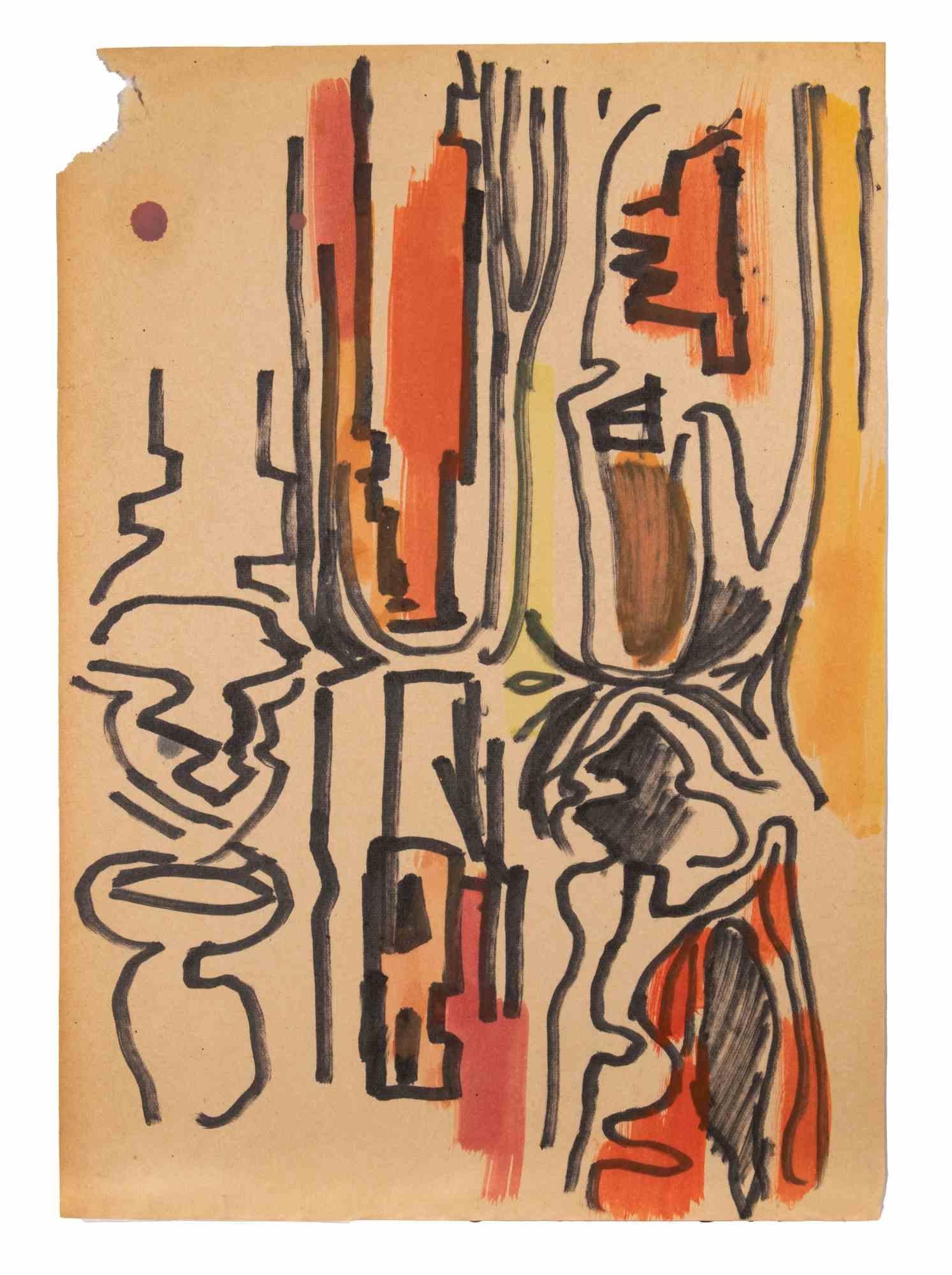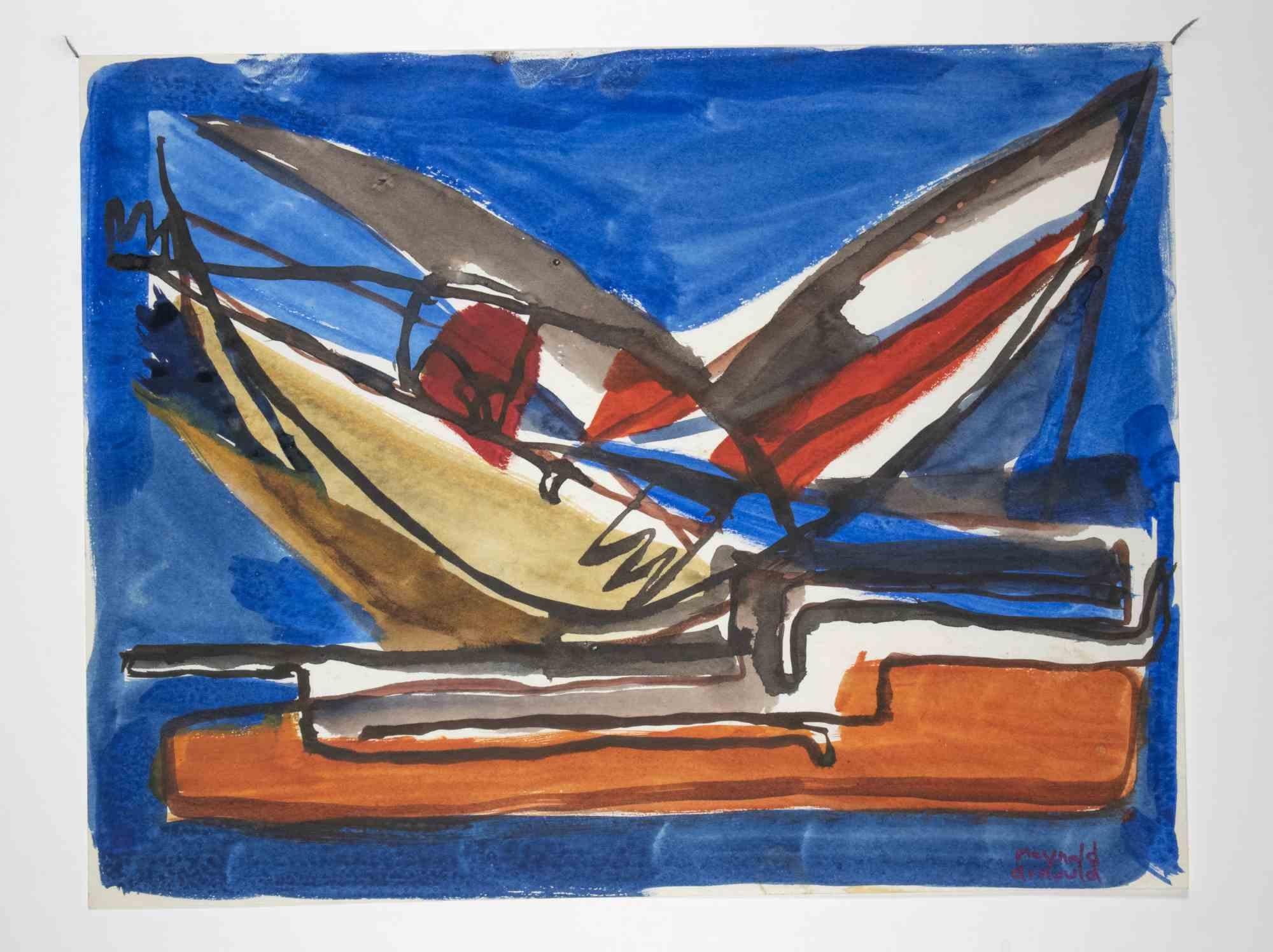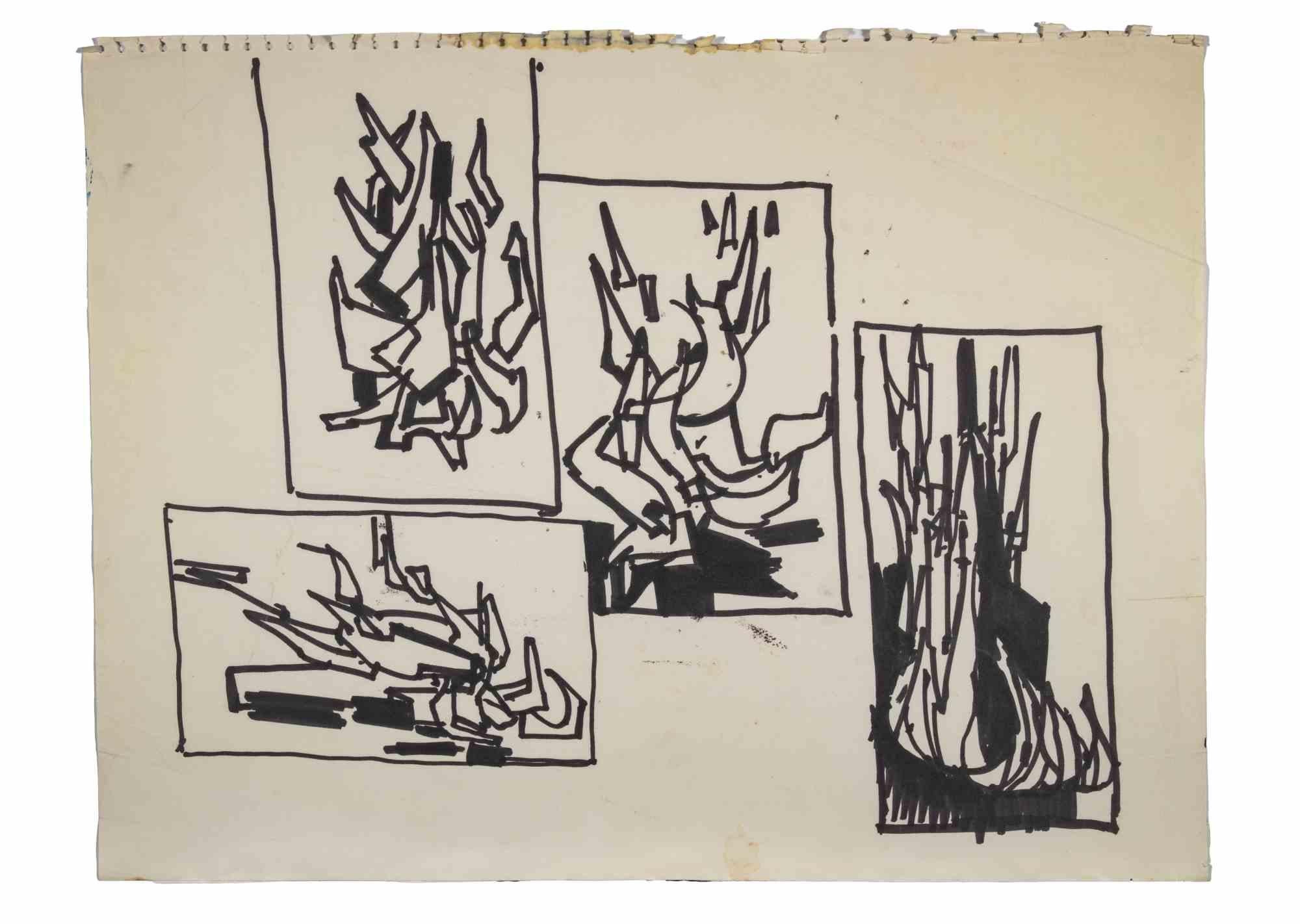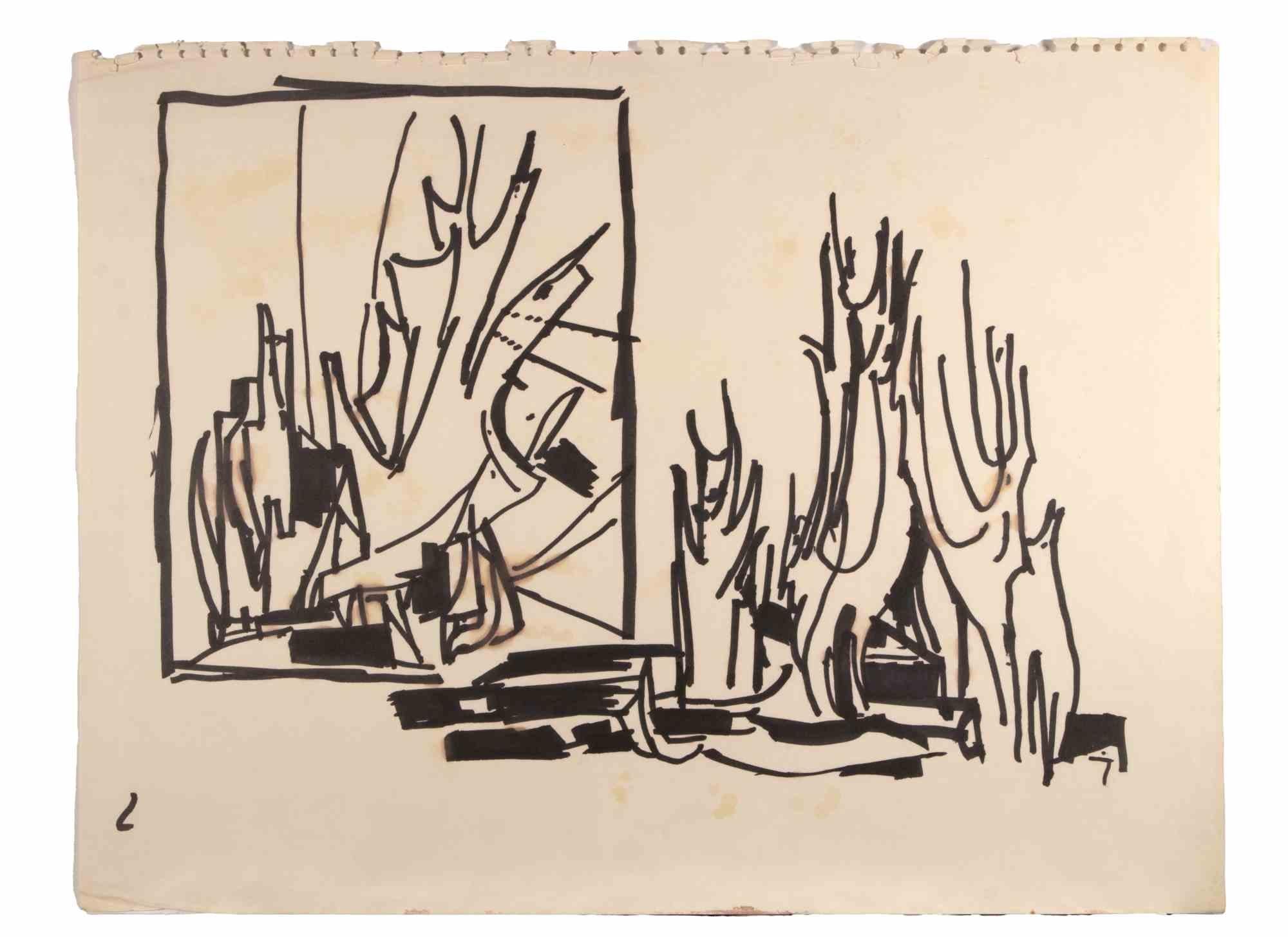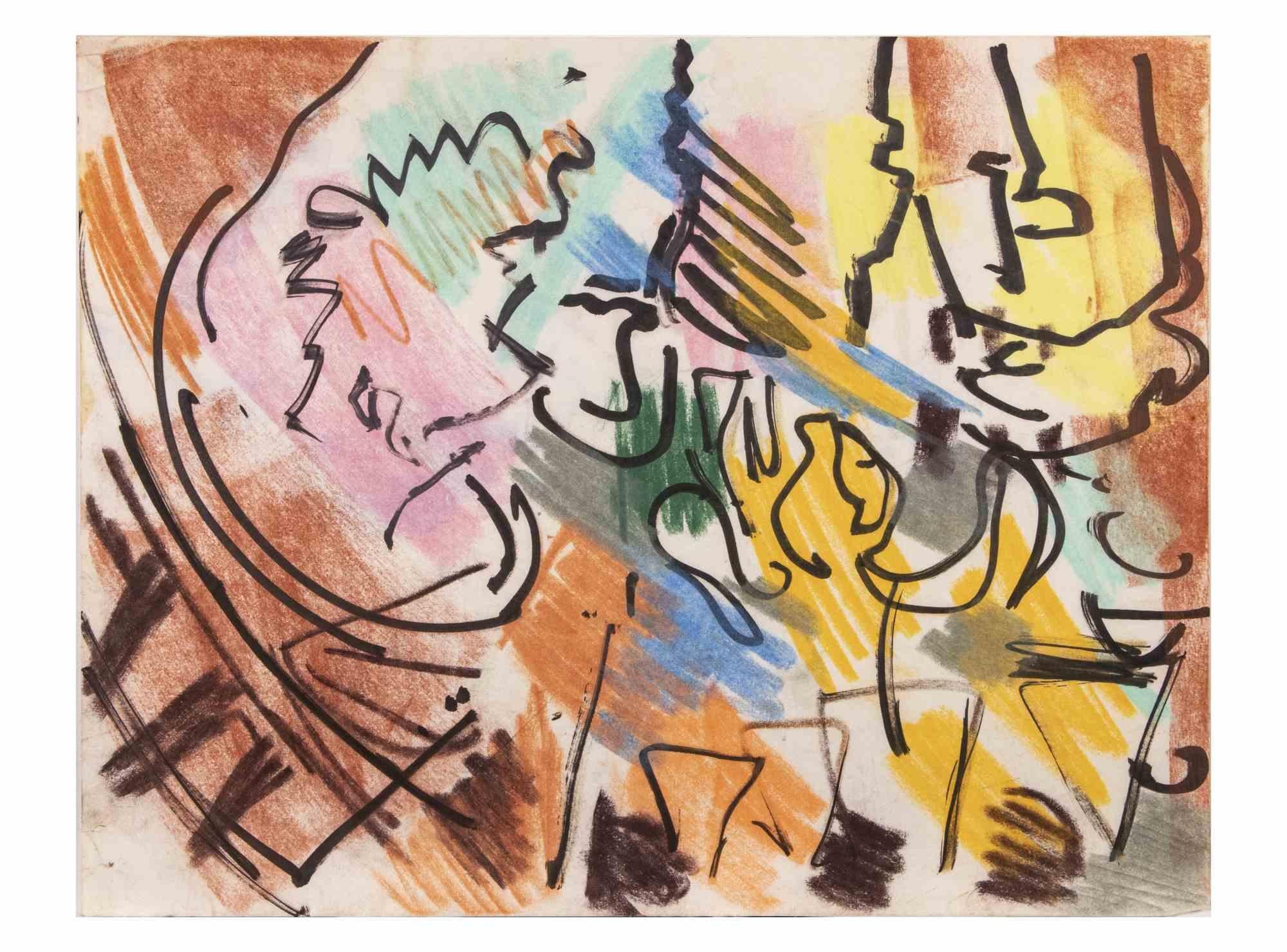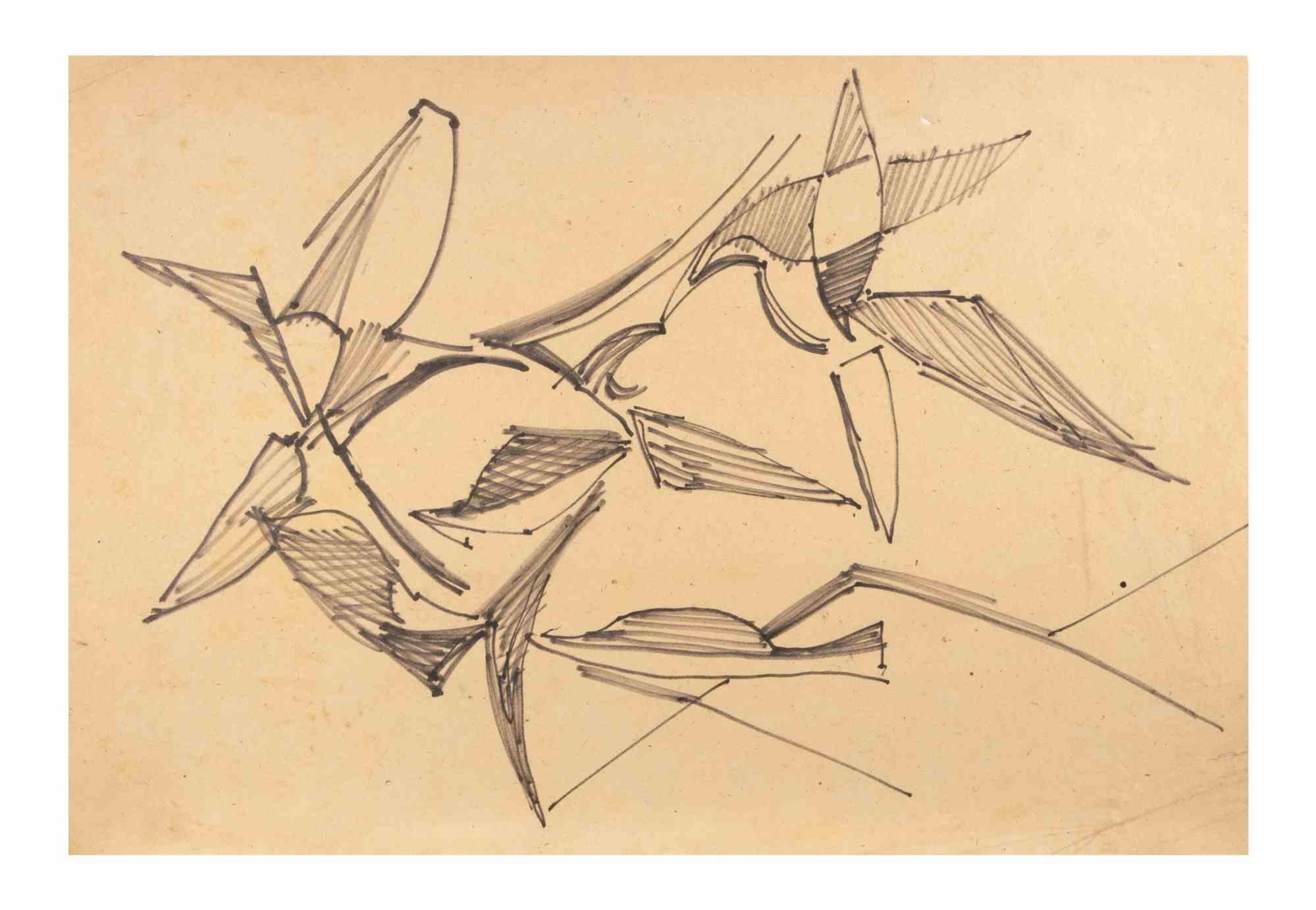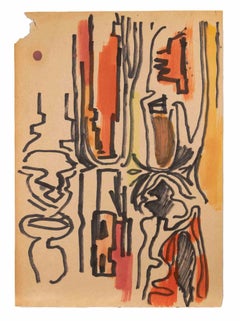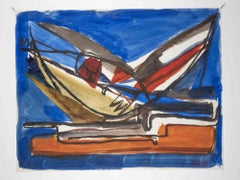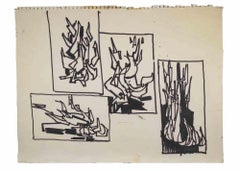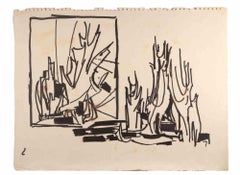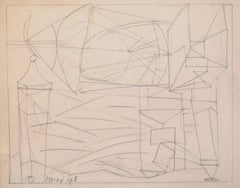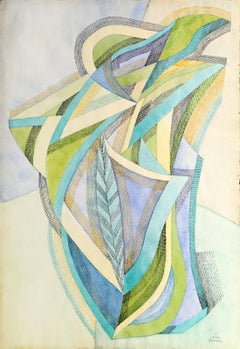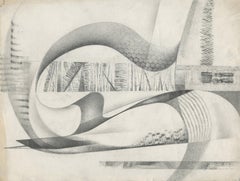Items Similar to Abstract Composition - Drawing By Reynold Arnould - Mid-20th Century
Want more images or videos?
Request additional images or videos from the seller
1 of 3
Reynold ArnouldAbstract Composition - Drawing By Reynold Arnould - Mid-20th CenturyMid-20th Century
Mid-20th Century
$590.22
£443.39
€500
CA$827.25
A$898.55
CHF 475.70
MX$10,849.38
NOK 5,938.69
SEK 5,625.97
DKK 3,808.13
About the Item
Abstract Composition is a Charcoal Drawing realized by Reynold Arnould (Le Havre 1919 - Parigi 1980).
Good condition on a yellowed paper, included a white cardboard passpartout (37.5x54.5 cm).
Monogrammed on the right corner.
Reynold Arnould was born in Le Havre, France in 1919. He studied at l'École des Beaux-Arts de Le Havre, and won the Grand Prix de Rome in 1939. In 1949, he was the director of an art school in Dallas Texas.
He exhibited at the Salon de Mai, Salon des Tuileries, and at the Salon d'Automne beginning in 1945. He is represented in several museums including Le Havre and Rouen.Arnold's early paintings are Cubist with use of deep colors. Typical subject matter included portraits and scenes of women in modern interiors. He also painted allegorical scenes, still lifes, and later, in the 1950's his work became abstract.
- Creator:Reynold Arnould
- Creation Year:Mid-20th Century
- Dimensions:Height: 12.8 in (32.5 cm)Width: 6.5 in (16.5 cm)Depth: 0.08 in (2 mm)
- Medium:
- Movement & Style:
- Period:
- Framing:Framing Options Available
- Condition:Insurance may be requested by customers as additional service, contact us for more information.
- Gallery Location:Roma, IT
- Reference Number:Seller: T-1377411stDibs: LU650311791042
About the Seller
4.9
Platinum Seller
Premium sellers with a 4.7+ rating and 24-hour response times
1stDibs seller since 2017
7,742 sales on 1stDibs
Typical response time: 2 hours
- ShippingRetrieving quote...Shipping from: Grasse, France
- Return Policy
Authenticity Guarantee
In the unlikely event there’s an issue with an item’s authenticity, contact us within 1 year for a full refund. DetailsMoney-Back Guarantee
If your item is not as described, is damaged in transit, or does not arrive, contact us within 7 days for a full refund. Details24-Hour Cancellation
You have a 24-hour grace period in which to reconsider your purchase, with no questions asked.Vetted Professional Sellers
Our world-class sellers must adhere to strict standards for service and quality, maintaining the integrity of our listings.Price-Match Guarantee
If you find that a seller listed the same item for a lower price elsewhere, we’ll match it.Trusted Global Delivery
Our best-in-class carrier network provides specialized shipping options worldwide, including custom delivery.More From This Seller
View AllAbstract Composition - Drawing By Reynold Arnould - 1970
Located in Roma, IT
Abstract Composition is a Color Markers Drawing and Watercolour realized by Reynold Arnould (Le Havre 1919 - Paris 1980).
Good condition.
No signature.
Reynold Arnould was born ...
Category
1970s Modern Abstract Drawings and Watercolors
Materials
Paper, Permanent Marker
Abstract Composition - Drawing By Reynold Arnould - 1955
Located in Roma, IT
Abstract Composition is a Watercolor artwork realized by Reynold Arnould (Le Havre 1919 - Parigi 1980) in 1955.
Good condition included a white cardboard passpartout (35x49 cm).
H...
Category
1950s Modern Abstract Drawings and Watercolors
Materials
Paper, Watercolor
Abstract Composition - Drawing By Reynold Arnould - 1970
Located in Roma, IT
Abstract Composition is a Black Marker Drawing realized by Reynold Arnould (Le Havre 1919 - Parigi 1980).
Good condition on a sheet of a notebook.
No signature.
Reynold Arnould ...
Category
1970s Modern Abstract Drawings and Watercolors
Materials
Paper, Permanent Marker
Composition - Drawing By Reynold Arnould - 1970
Located in Roma, IT
Composition is a Black Marker Drawing realized by Reynold Arnould (Le Havre 1919 - Parigi 1980).
Good condition on a sheet of a notebook.
No signature.
Reynold Arnould was born i...
Category
1970s Modern Abstract Drawings and Watercolors
Materials
Paper, Permanent Marker
Abstract Composition - Drawing By Reynold Arnould - 1970
Located in Roma, IT
Abstract Composition is a Pastel and Color Markers Drawing realized by Reynold Arnould (Le Havre 1919 - Parigi 1980).
Good condition on a white paper.
No signature.
Reynold Arnou...
Category
1970s Modern Abstract Drawings and Watercolors
Materials
Paper, Permanent Marker
Abstract Coposition - Drawing By Reynold Arnould - 1970
Located in Roma, IT
Abstract Coposition is a Black Marker Drawing realized by Reynold Arnould (Le Havre 1919 - Parigi 1980).
Good condition on a yellowed paper.
No signature.
Reynold Arnould was bo...
Category
1970s Modern Abstract Drawings and Watercolors
Materials
Paper, Permanent Marker
You May Also Like
Clifford Ellis Mid-Century Abstract drawing Modern British Art
By Clifford Ellis
Located in London, GB
We acquired a series of paintings and drawings from Clifford and Rosemary Ellis's studio. To find more scroll down to "More from this Selle...
Category
Mid-20th Century Abstract Abstract Drawings and Watercolors
Materials
Gouache
A 1940s, Mid-Century Modern Abstract Surreal Drawing by Hananiah Harari
By Hananiah Harari
Located in Chicago, IL
A Striking, 1940s Modern Surrealist Abstract Drawing, "Magnetic Prisms", by Notable New York Avant Garde Artist, Hannah Harari (Am. 1912-2000). Graphite on paper, dating from 1948....
Category
Mid-20th Century Abstract Abstract Drawings and Watercolors
Materials
Paper, Graphite
Abstract Composition #1, Modern Cubist Drawing by Benjamin Benno
By Benjamin G. Benno
Located in Long Island City, NY
Benjamin Benno was an British-born American artist, best known for his Cubist and abstract works. This artwork is signed and dated.
Abstract Composition #1
Benjamin Benno, American ...
Category
1940s Cubist Still-life Drawings and Watercolors
Materials
Paper, Watercolor, Permanent Marker
Untitled Abstraction
By Medard P. Klein
Located in Fairlawn, OH
Untitled Abstraction
Graphite on paper. c. 1946
Unsigned
Provenance: Estate of the Artist
Inherited by his neighbor/caregiver
Condition: Staining at corners
...
Category
1940s Abstract Abstract Drawings and Watercolors
Materials
Graphite
Abstract American Modernism Mid-Century WPA Era Drawing Woodstock 20th Century
By Konrad Cramer
Located in New York, NY
Abstract American Modernism Mid-Century WPA Era Drawing Woodstock 20th Century, Sight size is 16 x 12 inches.
Konrad Cramer (1888-1963)
Abstract
Mixed media on paper
17 x 12 inches
...
Category
1930s Abstract Abstract Drawings and Watercolors
Materials
Paper, Ink, Watercolor
Abstract Composition, Charcoal Painting by William Scott, 1959-1960 circa
By William Scott
Located in Kingsclere, GB
Abstract Composition, Charcoal Painting by William Scott, 1959-1960 circa
Additional information:
Medium: Charcoal
63.5 x 77.5 cm
25 x 30 1/2 in
Signed
William Scott was a British ...
Category
20th Century Abstract Paintings
Materials
Charcoal
More Ways To Browse
Mid Century Modern Texas Art
Charcoal Drawing Portraits Early 20th Century
Vintage Watercolor Palette
Vintage Watercolour Palette
Painting And Motherwell
Roz Jennings Drawings
Richard Perry
Red Line Drawings
Black Ink Line Drawing
Davis Gray Watercolor
Citron Minna
Infanta Margarita
Sexual Photography
Ray Kass
Vertical Abstract Watercolor
Alice Baber
Chris Ritter
Daniel Shipton
